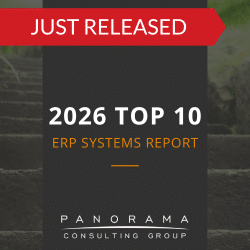In today’s data-driven world, modern, integrated enterprise software has become essential. Unfortunately, many organizations have company cultures that are resistant to software upgrades and digital transformation.
Cultural resistance is often overlooked by leadership, and by the time they realize it’s brewing, the project is already experiencing delays and cost overruns.
Today, we’re discussing cultural resistance to IT transformation and sharing strategies for effective change management during software upgrades.
The Relationship Between Organizational Culture and Legacy Software
Organizational culture plays a profound role in the staying-power of legacy software.
In a risk-averse or consistency-driven culture, employees may feel threatened by change, perceiving it as a disruption to their routines and job security. This resistance can lead to decreased productivity, a lack of engagement, and, ultimately, implementation failure. Our software expert witnesses have seen this happen one too many times.
Common Sources of Cultural Resistance to IT Transformation
Fear of the Unknown
The fear of the unknown is deeply rooted in organizational culture.
For example, many organizations have a culture of stability and predictability. These cultures value tradition and view change with suspicion.
Employees in such environments may fear that new software will disrupt their established ways of working, making their skills obsolete or diminishing their roles within the organization. This fear is not just about the technology itself but about the potential loss of the cultural norms and practices that have shaped their professional identities.
The Role of Cultural Narratives
Organizational culture is also shaped by the stories and narratives that employees tell themselves and each other.
In some cultures, past negative experiences with change can lead to a collective anxiety about future projects. If a previous software upgrade led to significant challenges or job losses, these experiences can become ingrained in the cultural memory, leading to a heightened fear of new IT initiatives.
ERP Training Plan Success Story
We helped this manufacturer implement an ERP training strategy to increase user adoption of its new ERP system.
Mistrust in Leadership
In some organizations, there is a deep-seated mistrust of leadership’s motives behind strategic decisions, especially those related to technology.
For example, if employees perceive that the primary goal of software modernization is cost-cutting rather than improving efficiency or innovation, they might refuse to fully adopt the technology.
This often occurs in organizations where communication from the top is sporadic or opaque. In these cultures, employees expect the worst from any new initiative.
Organizational Hierarchies
When decisions are made without input or feedback from those on the ground, employees may form the impression that leadership is out of touch with the realities of the workplace.
Organizations that overlook employee concerns and needs tend to alienate their workforce. As a result, employees view digital transformation as something imposed upon them rather than an inclusive process.
Cultural Attachment to Legacy Systems
One of the most persistent cultural barriers to IT transformation is a deep attachment to legacy systems.
These systems, often entrenched in an organization’s daily operations, become more than just tools; they evolve into symbols of stability and reliability, reflecting the values and practices that have long defined the company’s identity.
Cultural Identity and Legacy Systems
When legacy systems have been in place for decades, employees often take pride in their mastery of these tools.
Over time, the use of legacy systems can become a point of professional identity, where employees see themselves as guardians of the organization’s traditions and operational integrity.
This cultural attachment is particularly strong in organizations where stability and tradition are highly valued and where past success is closely linked to the use of legacy technologies.
The idea of replacing these systems with new, untested software can provoke anxiety and resistance.
Change Management in Software Upgrades: Overcoming Cultural Resistance
Successfully managing cultural resistance to legacy system replacement or IT transformation requires a methodology known as organizational change management (OCM). This is a strategic approach for addressing the human side of change.
Our change management consultants like to initiate OCM early in the digital transformation process to surface potential cultural resistance before it becomes entrenched.
OCM Success Factors for Managing Cultural Resistance
Communication
Organizations must clearly articulate the vision, goals, and benefits of the software upgrade.
We recommend crafting messages that resonate with the existing culture and addressing concerns that arise from within that cultural framework.
This involves not only explaining the benefits of the software upgrade but also connecting these benefits to the organization’s cultural identity and long-term vision.
For example, if the culture values autonomy, leaders might emphasize how the new technology will enhance that autonomy rather than disrupt it.
Training and Support
One of the most effective ways to reduce fear and resistance is through comprehensive training and support.
Employees should be given ample opportunity to learn how to use the new software and understand how it will impact their roles. This training should align with the organization’s culture in terms of learning pace and delivery methods.
Providing ongoing support, such as help desks or peer mentoring programs, can also help build confidence in the new systems.
Cultivating a Culture of Change
Building a culture that embraces change means fostering an environment where continuous improvement and adaptability are valued.
Leaders can build a culture of change by recognizing and rewarding employees who embrace new technologies and processes.
Additionally, promoting a growth mindset—where challenges are viewed as opportunities for learning and development—can help to reduce resistance.
For instance, if a manufacturing firm wants to implement a modern supply chain management system to access real-time warehouse and logistics data, it must first assess whether its culture would welcome a drastic change to data management practices and cross-departmental collaboration. If not, it should initiate a cultural shift by encouraging open communication through regular cross-functional meetings and collaborative projects.
Tailoring Change Management to Organizational Culture
There is no one-size-fits-all approach to change management. The strategies employed must be tailored to the specific cultural context of the organization.
For example, in hierarchical organizations, change management efforts may need to focus on securing buy-in from middle management, who can then influence their teams.
In more collaborative cultures, involving employees in co-creating the change process may be more effective.
Measuring and Adapting
Organizations should regularly assess how cultural dynamics are influencing the change process.
For instance, is cultural resistance being effectively mitigated or is it hindering user adoption?
As the OCM team gathers feedback, they may need to adjust the pace of change to better fit cultural expectations or provide additional support in areas where cultural resistance is stronger.
By continuously aligning change management practices with cultural realities, organizations can ensure the successful adoption of new technologies.
Change Your Organizational Culture to Achieve IT Transformation Success
Organizations can forge a path to modernization by understanding the root causes of cultural resistance, implementing proactive change management, and fostering a culture that embraces change.
If you have legacy software that doesn’t quite fit this digital age, contact our business software consultants to learn about all the success factors for software modernization, including change management, requirements gathering, and more.














